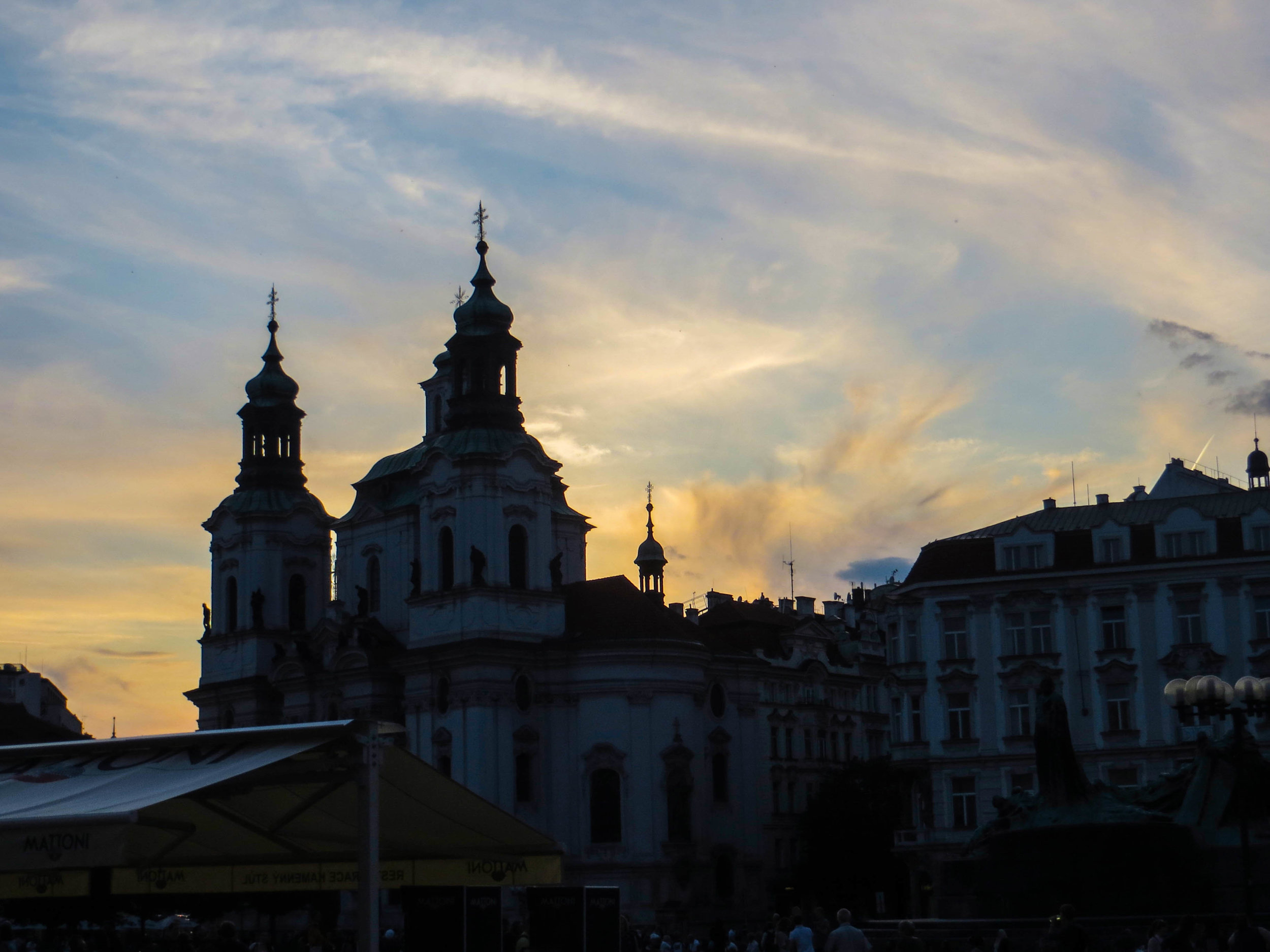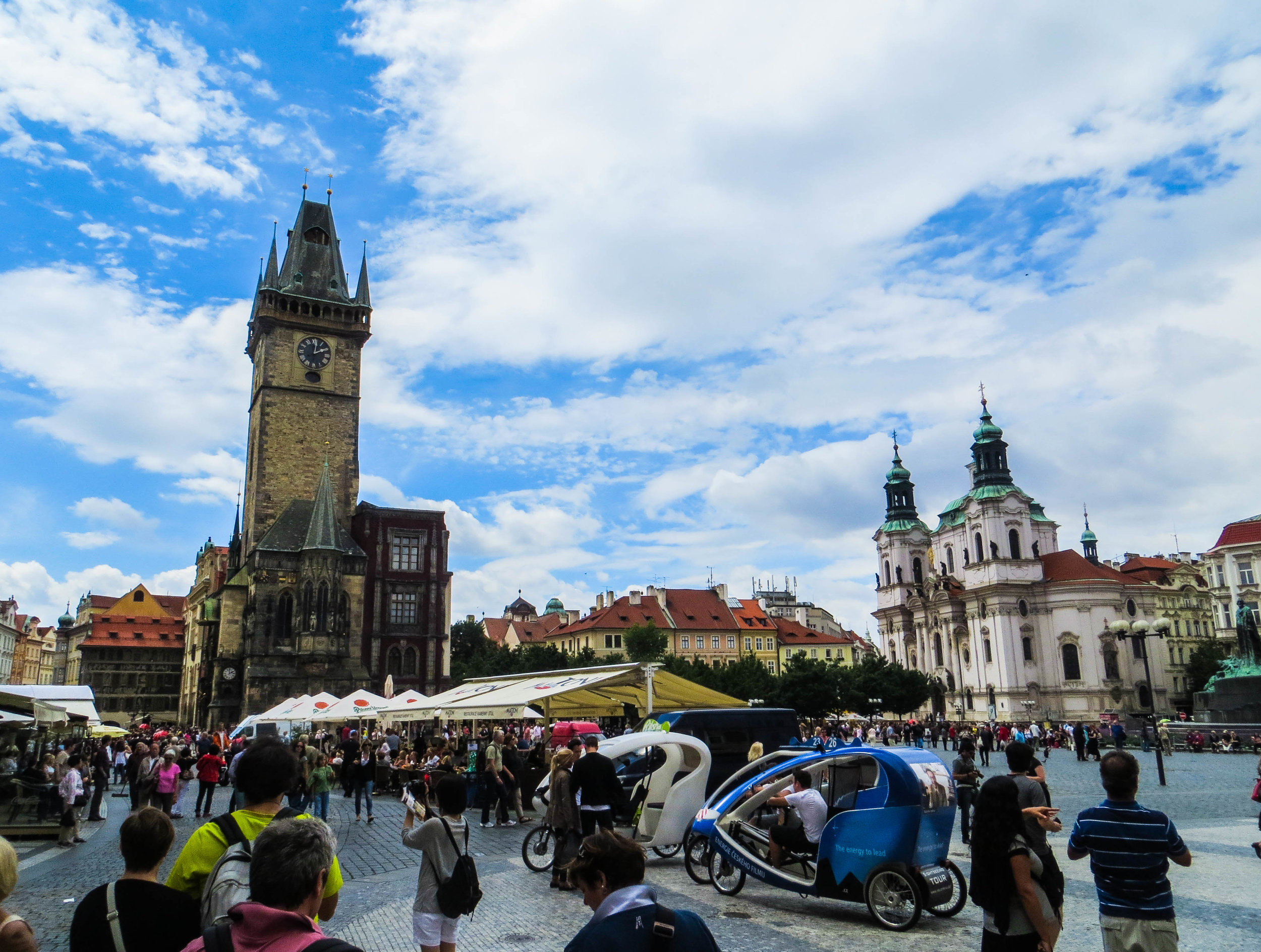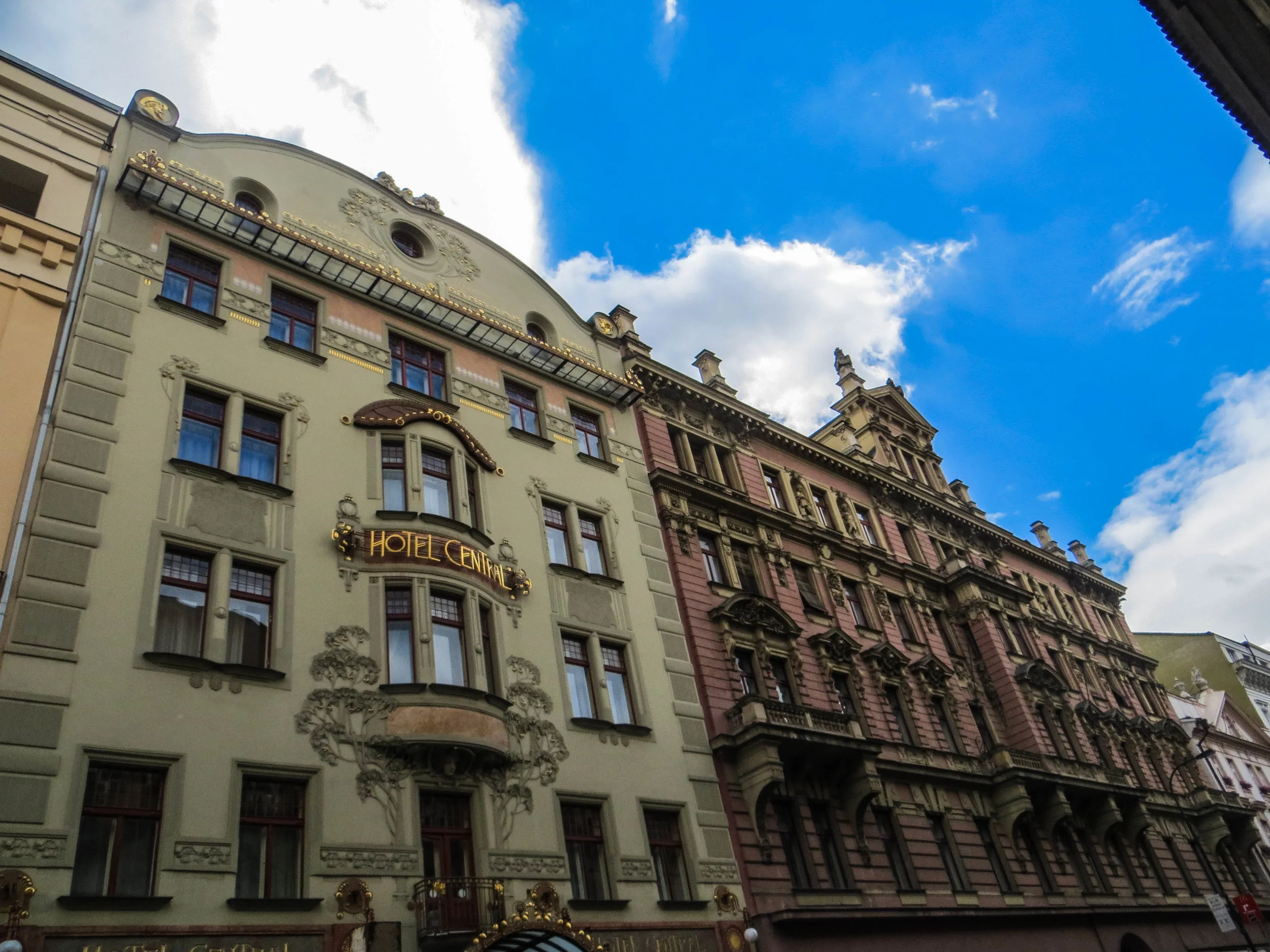We’ve reached the end of our #ThrowbackThursday series. Our last stop is Prague. But before we jump into that, some context.
As you may or may not know, I started this website in 2014 when I moved from Boston to Hanoi, Vietnam. This move was scary for me, but it actually wasn't my first time living abroad. During 2012, I lived in Madrid, Spain for a semester. And when that semester was over, I embarked on my first-ever Euro-trip. That’s how I ended up in Prague.
Prior to my arrival in Prague, everybody I talked to about this city RAVED. At least 10 different people told me that Prague was their favorite city in all of Europe, which is quite a competitive superlative. As had been the case with most of my travels up to this point, I did virtually zero research before arriving here. As I stepped off the train, Prague was still a complete mystery to me.
But before we get out into the city, let me give you the background information that I was still lacking at this point in my trip…
An Introduction To Prague
Prague is the historical capital of Bohemia. Through the last few hundred years, the boundaries in this part of Europe have been notoriously fluid. The map here has been re-drawn quite a few times as Empires have risen and fallen, but even through all of this upheaval, Bohemia has always been a notable region with a strong cultural identity. Today, Bohemia is more or less synonymous with the Czech Republic (formerly part of Czechoslovakia, and recently renamed to simply “Czechia”). With 2.6 million people living in its metro area, it’s the 14th largest city in the European Union. However, what it lacks in size relative to other European capitals, it more than makes up for in clout. When it comes to history and culture, few cities pack a punch in quite the same way Prague does.
Prague was founded in the 7th century, during the Romanesque. It grew and flourished during the Gothic, Renaissance, and Baroque eras, and was a major seat of power in the Kingdom of Bohemia, Holy Roman Empire, Austro-Hungarian Empire, Protestant Reformation, and the Thirty Years’ War. It was also along for the ride during pretty much every other major event in Western history. However, to visit today, WWI, WWII, and Soviet Rule seem to have left the most obvious scars on Prague, no doubt thanks to their relative recency.
During my time here, I remember being told quite a few times that it was a city that had been conquered too many times for its own good. A tour guide from the hostel I was staying that explained how these prolonged periods of oppression and foreign rule have seeped into the present-day Czech identity (or lack thereof). To be honest, I don’t think I know enough to expand on this very much, but I always recall these remarks because they were so interesting to me. One thing is for sure, Prague today feels a lot like an amalgamation of all things Europe. Here it is on the map for some context…
Arriving In Prague
First Impressions
When I stepped off the train in Prague, I remember thinking to myself, “Oh shit! I’m in Eastern Europe now!”
In truth, the Czech Republic is actually better classified as Central Europe, which—even at this point in my life—was not an entirely unfamiliar region to me. However, my arrival here did mark an important “first” in my travels, which is probably what I was reacting to.
This was my first time in a country that had formerly been a part of the Soviet Union. In fact, even now, 7 years later, it remains the only former-USSR country I have visited. Prior visiting Prague, I thought of it much more in through the lens of its Bohemian past, but when I actually got here, the energy felt very different than what I had expected. It was summertime, but somehow it felt quite cold.
People who have also been to Prague might think I’m being dramatic. After all, this gorgeous Bohemian metropolis is a far cry from the brutalist cinder-block architecture found elsewhere in the Eastern Bloc. This is ~*Prague*~
Well I can’t quite explain this change in energy that I felt. I think that traversing the overgrown, concrete landscape of Prague’s gritty outskirts between the train station of the city center left such a strong impression on me that by the time I arrived in Prague proper, my ideas about this city and this country were permanently altered. I’m not sure what train station I arrived in, but I remember a lot of concrete, graffiti, and barbed wire. And the CLOUDS! They were very dark and dramatic that day. Very Kafka-esque. This is a phrase I love using, but I made sure to do so in this article because Prague is actually Franz Kafka’s hometown! (If you don’t know who he is, he was a famous writer, known for writing some of the STRANGEST stories ever. If you didn’t read The Metamorphosis in high school, you can check out the SparkNotes here.)
During my time in Prague, we stayed at the Elf Hostel. This is the only hostel name that I remember from this whole #TBT series, and even though it’s a bit of a hike from city’s more historic quarters, I would still recommend it. It’s got all the infrastructure you need when you’re backpacking, including some great options for city tours.
On our city tours, I think we covered almost every tourist attraction that Prague has to offer. It was a lot of information to take in, and to be honest, I only really retained bits and pieces. We visited a lot of Prague’s most iconic sites, like The Charles Bridge (Karluv most), Prague Castle (Praha hrad), Old Town Square (Staromestské námestí), and many more, but I feel like I glazed over a lot of these. The next time I’m in Prague, I promise to break it all down for you.
However, one thing that I DO remember vividly was the Memorial Statue for Kafka. This statue is on Dusni Street in Prague’s famous Jewish Quarter, Josefov. This neighborhood is actually one of the only remaining historically Jewish neighborhoods in the region, because the rest of them were destroyed in WWII. So why did Josefov survive the war? Here’s where it gets weird. In his vision for world domination, Hitler had planned to preserve this neighborhood as his “Museum of an Extinct Race.” The Nazis even brought other Jewish artifacts from around Europe to be persevered in this neighborhood. CREEPY!
Anyway, here are a few of my favorite shots from around Prague. These photos include the sites listed above, and then some…
The John Lennon Wall
In the beginning of 1980, this wall was nothing special. It was just a random wall on a quiet street in Prague.
On December 8th, 1980, John Lennon was murdered outside of his apartment in New York City.
Shortly afterwards, an unknown graffiti artist painted an image of John Lennon on this random wall in Prague, as well as a selection of his lyrics. And for the next few years, that’s all it was. A single piece of graffiti.
However, in 1988, this wall became something of a flashpoint in local politics. Suddenly, it functioned as an art-infused forum for people to write their grievances against then-Communist leader Gustáv Husák. Needless to say, Husák did not like this wall. There were reportedly some violent protests that erupted in relation to this wall, prompting the government to eventually paint over it. But in the blink of an eye, there was NEW graffiti on the wall, depicting flowers and even more John Lennon lyrics. This was the beginning of “Lennonism” in Prague, whose subscribers were described by Communist Soviet/Czech authorities as “alcoholics, mentally deranged, sociopathic, and agents of Western capitalism.” There’s some classic propaganda for you.
Anyway, the world kept turning, the Soviet Union collapsed, the Berlin Wall was torn down, the Iron Curtain was lifted from Prague, and in that time, the John Lennon Wall become something of an institution. People now come from all over the world to paint their own additions onto the wall. Consequently, the art on this wall is changing every day. This wall is in an enduring symbol of love and peace, but is also now a low-level tourist attraction in its own rite. The original portrait of Lennon has long-since been painted over, and everyday new people show up with spray paint cans to leave their mark.
During my visit to Prague in 2012, I got the chance to leave my own mark. See if you can spot it in the pictures below…
Leaving prague
+ Reflections
On my last night in Prague, my fellow travelers and I went out drinking. This is when I found out how seriously the Czech take their nightlife. That night started out as being pretty routine, but when the clock struck 10:30pm, suddenly bartenders were taking off their shirts, standing on the bar, and drizzling vodka into the mouths of their patrons. After watching this unfold from across the bar, I decided to jump into the fray and be one of those patrons myself. This night was the first time I ever tried real absinthe. But I will spare you the drunken shenanigans of young Peter.
On the bus out of Prague the next evening, I remember a feeling of extreme transience. At the time, this was the longest that I had ever been on the road continuously. That night I would take an overnight bus south through Austria to the Vienna airport to catch a 6am flight back to Madrid, where the remainder of my luggage was in a storage locker outside Barajas Airport. I would leave the airport, get a bus to the storage locker, get back on the bus, go back into the airport, go back through security, find my gate, get on a flight to JFK, and then end up STUCK in New York City for the night. Luckily family friends took me in for the night. Shout-out to Phil & Val! And finally, the next day, I flew back to Ohio. WHEW!
Places like Prague have a way of passing right through me when I don’t have time to do business with them fully. Prague deserves to be explored more thoughtfully and more thoroughly, but I was young and I was getting tired. Walking around, I remember being a bit overwhelmed by how much there was to process here. One day I will come back here and write a much more informative article about it, but this time around, Prague (and the rest of this trip) gave me something very different.
2 years later I would graduate college and move to Hanoi, staying away from home for another ~1.5 years. Looking back over my more formative years, I can see that this experience played HUGE role in my ability to do that. Traveling might seem glamorous sometimes, but it’s hard. Because traveling is not the same thing as a vacation. Living abroad is even harder. Living outside of the west, in a truly alien culture is extremely hard, and living outside of the “1st world” can also make matters more difficult. It takes a lot of awareness, gumption, and self-reliance, and I was very privileged to have been afford the opportunity to “level up” over the years, until I was ready to go live in a place like Vietnam. That was big for me, but I know there is a bigger move still in my future. I might not come back this time. At this point you might be thinking to yourself, “Wow, Peter really likes it when people travel.”
Yeah, I really do.
Everybody should do it at some point. When you travel, you start to know things that people who have never traveled are likely never to understand. That’s why people who travel inevitably end up being advocates for social issues within their communities. That’s why people who travel don’t support the U.S. border wall, or Brexit, or any of the nationalist rhetoric flying around right now. These are all the work of people who feel threatened by the world around them. And the more you travel, less threatened you become.
To be clear, I’m not saying you can’t oppose these things by sheer virtue of being a good, smart, thoughtful, empathetic human who has a natural instinct to fight for the greater good… but traveling definitely helps you become that person, and puts the final nail in the coffin of your potential to be anybody else. 🙂 Prague was the last stop in a trip that empowered me to get out into the world, do things that I was afraid to do, and really start to become that person.
So let me close this out with something that tied itself to Prague in my mind a long time ago. This song is from a concept album all about WWII. It carries a pretty distinct energy that I have come to associate with Josefov for some reason.
Czech it out.

























































